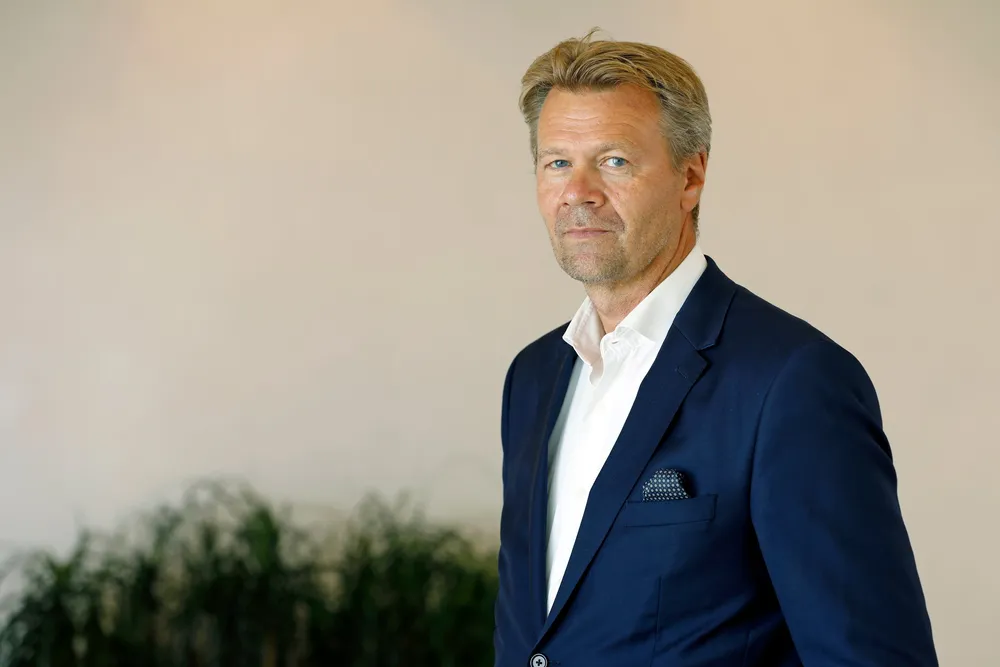Empire Wind faces Trump risks but can deliver on profitability: Equinor green chief
Oil & gas group's business model for offshore wind is under scrutiny as it sees fewer profitable opportunities in sector

With the performance of Equinor's renewable energy investments under intense scrutiny from investors, the Norwegian oil and gas giant is adamant that it can make its Empire Wind 1 US offshore wind project fit with its robust new requirements on profitability.
Equinor reported a $9.9bn net profit for the full year in 2024, which was roughly in line with analysts' forecasts.
But an upbeat presentation gave way to a sustained sell-off that at one point saw Equinor’s share price down by as much as 17% from levels seen immediately prior to the CMU.
Most analysts saw lowered expectations for shareholder distributions as the main reason for these reversals, but there were also complaints that Equinor had not reduced low carbon capex more aggressively.
Equinor's CEO Anders Opedal said the company would deliver an overall return on capital employed above 15% to 2030, and to keep the return from investment in renewables and low carbon above 10%.
Opedal said scrapping the 810MW Empire Wind 1 project is out of the question, with $2bn already invested, supply contracts signed and cancellation costs to be paid.
But Equinor tried to show that the New York offshore wind project can be made to fit with the strategy of high-grading its portfolio and achieving double-digit returns.
De-risking efforts have so far included a successful re-bidding of offtake for an uplift of more than 30% from the original strike price, as well as putting in place project financing with a 5% interest rate hedge.
“We still aim to bring in a partner, but that will be at the right point,” he added.
Of $7bn in total capex required for Empire Wind, $2bn has already been spent, boosted by a $1bn farmout to BP in 2020.
Of the remaining $5bn, roughly $3bn will come from project financing that reached closure last December.
The outstanding $2bn will be fully covered by investment tax credits (ITC) for clean power projects under the US Inflation Reduction Act (IRA) meaning that the project, in principle at least, is fully financed.
These tax credits are due to be received in 2027, when Empire Wind 1 should be fully operational.
Equinor's CFO Torgrim Reitan said Empire Wind will achieve a return on equity that gets close to the promised 10% for the renewable and low-carbon portfolio without depending on new farm-in revenue. Some analysts have questioned whether the project can hit anything like that level of profitability.
ITC risk
Økland addressed the possibility that US tax credits could be jeopardised by the executive orders and President Donald Trump’s unbridled hostility to offshore wind.
“Obviously these days there is political uncertainty and a lot of discussion around this at present,” Økland said.
“We think it is way too early to draw conclusions on anything right now, but let’s be clear that ITC is not new. A big part of what is out there now was actually introduced during Trump's first period as president.
“If you're going to change the ITC, a change in the law, that law has to pass Congress in order to make that change as well.”
Økland said the company will continue to monitor these issues closely “and engage with key stakeholders both in state level and federal level”.
Tariff threat
Empire Wind 1 will also face continuing challenges in a market where the supply chain never really got going, and the possibility of more inflation.
This possibility has become more acute with threats by the Trump administration to impose higher trade tariffs on Canada, Mexico, the US and China.
Equinor CEO Anders Opedal acknowledged that the company has already issued orders in the US for some items, including cables, but he acknowledged the risk.
“A substantial part is coming from Europe, for instance, the [wind turbines] will be produced in Europe by Vestas. Clearly this is on our radar, but it's too early to say what the potential impacts will be,” he told analysts.
"These are challenging times on the offshore wind side, and it is fair to say that we see fewer profitable opportunities than we’d seen earlier," he said.
"That's why we've taken some of the measures that we have taken, and we’ve been very clear that new projects need to meet that double digit rate.
"I think it's going to be a tough market for some years to come, but we have to build a profitable renewable business.
"Longer term, we still see renewables and offshore wind as a key component in the energy transition that's definitely going to happen going forward. So, longer term, we still believe in it."
Firefly to fly?
“We are currently in dialogue with the government and discussing the terms and conditions of that offtake but... we have not made any decision in terms of whether we want to move forward with this or not," stressed Økland.
"That will be based on different factors, We need to negotiate the terms and conditions of the offtake agreement and second, we need to de-risk the project, which means that we will need to bring in partners."
Økland added that Equinor will again look at project financing as a key component for a possible FID.
“We need to be comfortable with all these things before we actually move forward,” he said, adding that political stability is among the elements that will go into the hat when analysing the risk for South Korea.
“Assessing and understanding that risk, and if this can actually impacts the support scheme going forward would be a key part of this as well,” he said.
(Copyright)